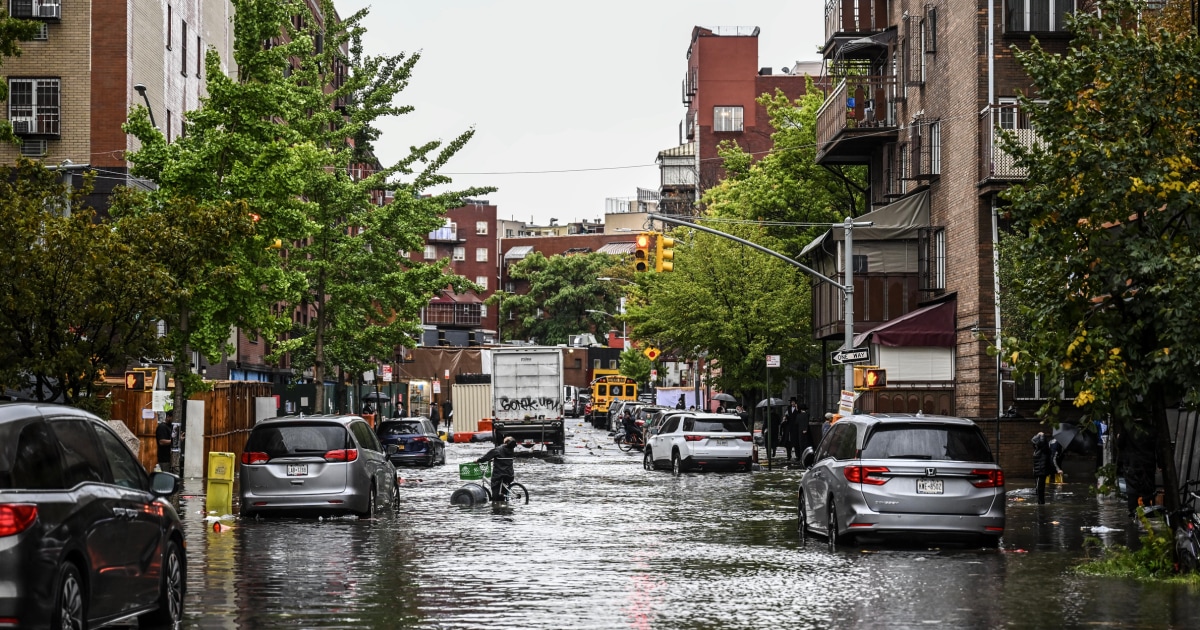A severe storm wreaked havoc on New York City, unleashing over 7 inches of rain within a 24-hour period. The torrential downpour turned city streets into raging rivers and brought subway travel to a standstill as water inundated underground stations. This event exposed the vulnerability of New York City’s aging infrastructure to extreme weather aggravated by climate change, despite efforts to enhance climate resilience following Hurricane Ida in 2012.
The hardest-hit areas experienced heavy rainfall rates of up to 2.5 inches per hour, leading to road closures, submerged vehicles, and stranded city buses. Subways, regional rail lines, and air travel were either suspended or faced severe delays. Additionally, one school in Brooklyn had to be evacuated. According to Joseph Kane from the Brookings Institute, the reality is that climate is becoming more extreme and unpredictable, demanding increased investment in infrastructure, which often comes too late to prevent such disasters.
Steve Bowen, an expert on climate change and infrastructure, stated that events like this storm expose the escalating risks faced by cities such as New York as climate change intensifies rainfall and tests the limits of existing infrastructure. The ability of a warmer atmosphere to hold and deliver more moisture results in intensified storms.
Flood watches were in effect for approximately 23 million people across New York, New Jersey, and Connecticut. New York Governor Kathy Hochul declared a state of emergency for New York City, Long Island, and the Hudson Valley, emphasizing the life-threatening nature of the rainfall. Mayor Eric Adams also issued a separate state of emergency but faced criticism for a slow public response and inadequate early warnings.
Zachary Iscol, New York City’s emergency management commissioner, revealed that this storm was the wettest day the city has experienced since Hurricane Ida. Hurricane Sandy, which hit in 2012 and resulted in 43 fatalities, was intended to serve as an awakening to New York officials regarding climate and weather risks. However, the city comptroller’s office reported that insufficient progress had been made in improving the city’s resilience to climate risks since Hurricane Sandy. Only 73% of the $15 billion in federal grant funding allocated after the storm had been spent by June 2022, and the majority of the city’s own contributions to resilience projects remained unused.
The flash-flooding event and Hurricane Ida have highlighted the need for new investments that focus on addressing extreme precipitation, such as expanding green infrastructure, upgrading storm sewer systems, and ensuring efficient real-time emergency communication for localized flash flooding. The city comptroller’s office suggests registering basement dwellings, requiring safety inspections, and implementing measures to safeguard occupants from rising sewer water in cellars.
Mona Hemmati, a research scientist at Columbia Climate School, explained that this storm underscores the vulnerabilities faced by coastal communities, compounded by climate change. In densely populated areas like New York, the risk of flooding is heightened due to impermeable surfaces and a lack of green spaces. Hemmati acknowledged the city’s efforts to prioritize climate resilience in rebuilding following Hurricane Sandy but emphasized the need for ongoing investment and more time to complete critical infrastructure projects.
While efforts at the government level are vital, Hemmati also emphasized the role of individuals in building climate resilience. Public awareness and education about climate risks and the importance of establishing flood insurance coverage for properties were stressed. The potential impact of a prolonged government shutdown on recovery efforts was also highlighted, particularly regarding the National Flood Insurance Program’s authorization, which is set to expire soon.
Denial of responsibility! Vigour Times is an automatic aggregator of Global media. In each content, the hyperlink to the primary source is specified. All trademarks belong to their rightful owners, and all materials to their authors. For any complaint, please reach us at – [email protected]. We will take necessary action within 24 hours.


